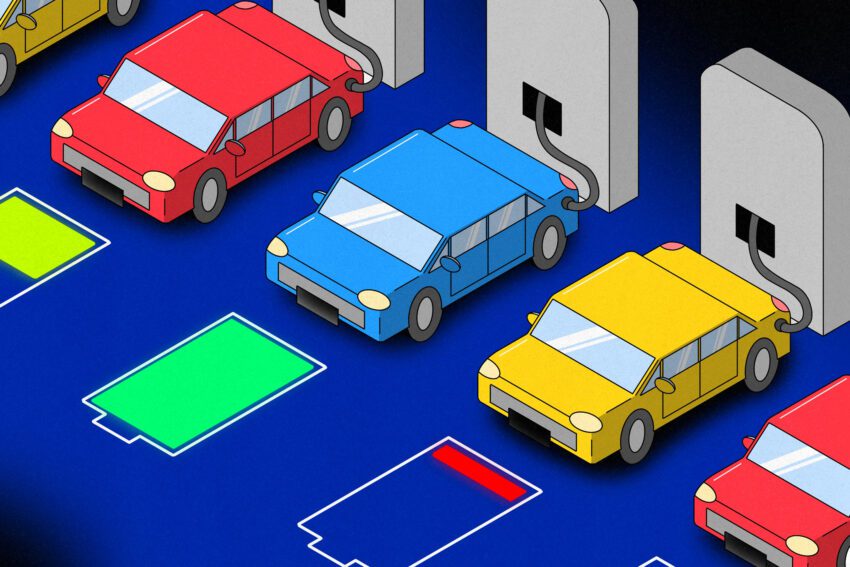
ford and gm are buying their own Ford and GM are implementing a strategic initiative to maintain the $7,500 federal EV tax credit, which is set to expire soon, in order to sustain electric vehicle sales.
ford and gm are buying their own
Background on the $7,500 Tax Credit
The federal tax credit of $7,500 for electric vehicles (EVs) has been a significant incentive for consumers considering the purchase of an electric vehicle. Introduced as part of the Energy Improvement and Extension Act of 2008, this credit aimed to encourage the adoption of cleaner vehicles and reduce reliance on fossil fuels. However, the credit is subject to a phase-out once a manufacturer sells 200,000 qualifying vehicles, which has led to varying eligibility among different automakers.
As the deadline for the tax credit approaches, many consumers are rushing to make purchases before the incentive disappears. This surge in demand has been particularly evident in the months leading up to the September 30th expiration date. According to industry analysts, the impending loss of the tax credit could lead to a significant decline in EV sales, which is why Ford and GM are taking proactive measures to mitigate this impact.
Ford and GM’s Strategic Initiative
In a bid to keep the momentum of EV sales alive, Ford and GM have devised a plan that involves their financing arms and local dealerships. According to reports from Reuters, the automakers are collaborating with dealers to create short-term programs that will allow customers to continue receiving the tax credit on leased EVs through the end of the year.
How the Program Works
The mechanics of the program are relatively straightforward. Ford and GM will purchase electric vehicles from their own dealerships by having their finance divisions provide down payments on all electric models in inventory. This approach ensures that the vehicles remain eligible for the tax credit before it expires.
Once the automakers acquire these vehicles, they will be leased to customers at a price that incorporates the $7,500 discount. This means that consumers can still benefit from the tax credit even if they do not purchase the vehicle outright. The leasing structure is designed to make EVs more accessible and financially attractive to potential buyers.
Dealer Collaboration
The success of this initiative hinges on the cooperation of local dealerships. Ford and GM have been in discussions with dealers to ensure that they are on board with the plan. Dealers play a crucial role in facilitating these leases and ensuring that customers understand the financial benefits of leasing an EV under this program.
Dan Barbossa, a spokesperson for Ford, emphasized the company’s commitment to providing competitive lease payments for electric vehicle shoppers through Ford Credit until December 31st. This statement underscores the automaker’s intention to keep EVs appealing to consumers during a critical period.
Market Implications
The implications of this initiative are significant for both automakers and consumers. For Ford and GM, maintaining EV sales is crucial for their long-term strategies, especially as the automotive industry shifts toward electrification. A decline in sales could hinder their progress in meeting regulatory requirements and achieving sustainability goals.
For consumers, the continuation of the tax credit through leasing offers a temporary reprieve from the financial uncertainty associated with the expiration of the incentive. Many potential buyers may have been deterred from purchasing an EV due to the anticipated loss of the tax credit. By allowing customers to lease vehicles at a discounted rate, Ford and GM are aiming to alleviate some of these concerns.
Sales Trends and Consumer Behavior
Recent sales trends indicate a spike in EV purchases during July and August, as consumers rushed to take advantage of the tax credit before the deadline. Industry experts predict that once the credit is no longer available, EV sales could experience a sharp decline. This potential downturn is particularly concerning given the growing competition in the EV market, with numerous automakers introducing new electric models.
Consumer behavior is also evolving, with many buyers becoming more discerning about their vehicle choices. The availability of incentives like the $7,500 tax credit has played a pivotal role in influencing purchasing decisions. As the landscape changes, automakers must adapt their strategies to maintain interest in their electric offerings.
Risks and Challenges
While the initiative presents several advantages, it is not without risks. Ford and GM will incur financial losses on any unsold EVs that remain in inventory after the tax credit expires. This situation could lead to increased pressure on their balance sheets, especially if the anticipated sales boost does not materialize.
Moreover, it remains unclear whether either automaker plans to extend the discount program on leased EVs beyond the end of the year. The uncertainty surrounding the future of the tax credit adds an additional layer of complexity to their strategies. If the program is not extended, dealers may face challenges in moving inventory, potentially leading to excess stock and further financial implications for the automakers.
Eligibility of Electric Models
As of now, Ford’s F-150 Lightning is the only electric vehicle in its lineup that qualifies for the tax credit. The Mustang Mach-E, despite being a popular model, does not meet the necessary battery requirements to qualify. On the other hand, GM has several eligible electric models, including the Chevy Equinox, Blazer, and Silverado, as well as the Cadillac Lyriq, Optiq, and Vistiq, and the GMC Sierra EV. This diversity in eligible models gives GM a competitive edge in attracting consumers looking to take advantage of the tax credit.
Stakeholder Reactions
The reactions from various stakeholders have been mixed. Industry analysts view Ford and GM’s initiative as a pragmatic approach to maintaining sales momentum in a challenging market environment. However, some critics argue that this strategy may only serve as a temporary fix and that a more sustainable solution is needed to support the long-term growth of the EV market.
Consumers have expressed a range of opinions regarding the tax credit and the leasing program. Many potential buyers are relieved to see that they can still benefit from the tax credit through leasing, while others remain skeptical about the overall viability of EVs without such incentives. The ongoing dialogue about the future of the tax credit and its impact on consumer behavior will likely continue as the deadline approaches.
Conclusion
Ford and GM’s initiative to buy their own EVs and offer leasing options with the $7,500 tax credit is a strategic response to the impending expiration of this critical incentive. By collaborating with dealers and leveraging their financing arms, the automakers aim to sustain EV sales and maintain consumer interest in electric vehicles. However, the risks associated with this approach, coupled with the uncertainty surrounding the future of the tax credit, highlight the challenges that lie ahead for both manufacturers and consumers in the evolving automotive landscape.
Source: Original report
Was this helpful?
Last Modified: October 1, 2025 at 9:42 pm
0 views















